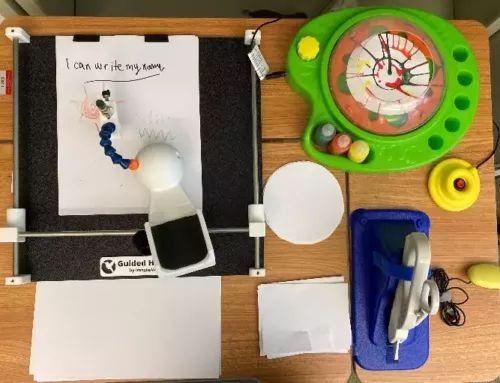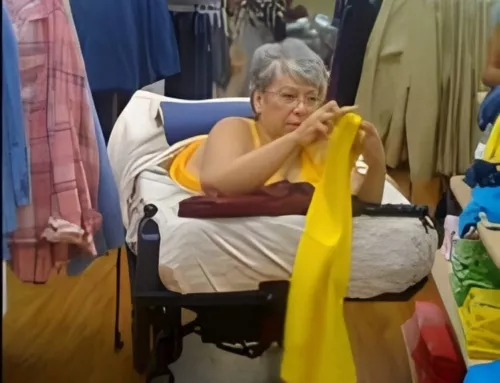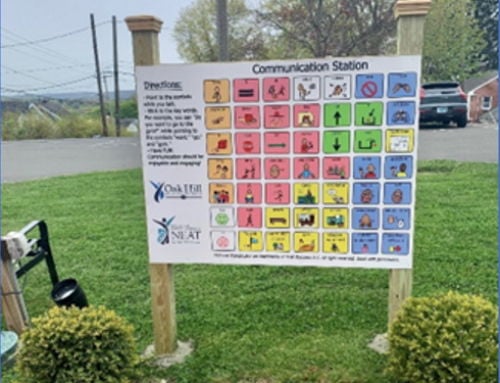Indispensable Program Partnerships


During the pandemic, State and Territory A.T. Programs are taking advantage of new or existing partnerships to assist older Americans and persons with disabilities.
In this latest COVID-19 Issue Brief, AT3 Center highlights partnerships in North Dakota, Nebraska, and South Dakota that support health, safety, and quality of life with unique approaches.
Spotlight On Partnerships:
North Dakota:
In April of 2020, ND Assistive partnered with the ND Dept. of Human Services, Aging Services Division, to create the COVID-19 Equipment Distribution Program. The new initiative launched with Critical Relief Funds (and additional sources) and began by surveying rural nursing facilities to determine the needs of ND’s most socially isolated communities. Those needs informed the purchase of devices, including tablets and stands, personal listening systems, voice amplifiers, Bluetooth headsets, webcams, and smart speakers, all of which have become a part of the ND Assistive device loan inventory.
To date, over 1,250 devices are on long-term loan to over 110 nursing homes, now in both rural and metro areas. In addition, ND Assistive has been providing remote trainings and device demonstrations to facilities statewide. “It’s been a valuable and unique opportunity to connect with so many nursing homes at one time,” emphasizes ND Assistive Program Director Jeannie Krull. “We’ve connected with many facilities via Zoom and introduced them to all of our A.T. programs. We are building relationships to extend beyond the COVID-19 era.”
Nebraska:
In partnership with the Dept. of Health and Human Services and local private organizations, ATP Nebraska (a program within the Department of Education) plays an important role in keeping people independent and out of nursing homes. Residents who are Medicaid eligible and require a nursing home level of care can qualify for the Aged and Disabled Waiver or if certain criteria are met, the Developmental Disability Waiver. These allow Medicaid dollars to pay for home modifications through ATP (among other services and supports). DHHS refers eligible consumers to ATP for needed home and vehicle modification assessments, makes recommendations, and then—with client approval—sends them out for bid to Medicaid-approved contractors.
Sometimes it is necessary to seek out and pull together funding from a variety of sources to secure a person’s independence. ATP Nebraska has a full-time staff member dedicated to finding funding. Private foundations, UCP of Nebraska, the Alternative Financing Program at Easterseals, and sometimes Vocation Rehabilitation (for expensive vehicle/home modifications when a client is also VR eligible) may help complete or make a project possible.
“During COVID-19, we had several clients need home modifications to stay out of long-term care facilities, but they were over the asset limit for Medicaid. We worked with other funders to make their moves happen,” says Program Director Tobias Orr. “This is one of my favorite aspects of the AT Program in Nebraska. It really is gratifying. We are helping someone stay independent and saving the taxpayers’ money at the same time. So long as we’ve kept someone out of a nursing home for (on average) an extra three months, the service pays for itself.” Orr also knows of consumers the program worked with years ago who are still living independently. “It’s just a win-win for everybody,” he says.
South Dakota:
Despite service interruptions during the pandemic, one DakotaLink partnership that has maintained a steady stream of referrals is a program they run with the VA. DakotaLink assists veterans to leave hospitals and long-term care facilities by installing ceiling-mounted lift systems in private homes.
Program Director Page Hudson says DakotaLink has played an important role in moving veterans out of COVID-19-vulnerable environments to home where they can both socially isolate and gain independence.
With these systems, veterans with disabilities independently transfer from bed to wherever they want to go in their house. “The ceiling-mounted track systems are like an upside-down remote-controlled railway,” he explains. The user can independently bring the lift to them. “It’s pretty clever. It has thigh and arm supports that lift the user from a seated or prone position. They can then go forward and backward on the track, and there’s even a switch to change tracks for heading in another direction.”
For example, last fall, a veteran moved to his home in Sioux Falls with this DakotaLink assistance. He can now independently go from bed to toilet and to the shower. Hudson says this man would not be living at home without attendant care and this system in place, a safer alternative to the VA. The VA pays for the lift systems, and DakotaLink performs the home assessments and installations. DakotaLink provided 70 veterans with this service over the last year. “People want to be home even more so now than they ever did. And they don’t want to stay in the hospital when they can live independently,” Hudson says.
Monthly Blog Digest
Search the blog
State AT Program Blogs
California
Florida
Indiana
Kentucky
Louisiana
Maryland
Massachusetts
Michigan
Montana
North Carolina
North Dakota
Utah
State AT Program Blogs
The AT3 Center, the Association of AT Act Programs (ATAP), and the Administration on Community Living (ACL) make no endorsement, representation, or warranty expressed or implied for any product, device, or information set forth in this blog. The AT3 Center, ATAP, and ACL have not examined, reviewed, or tested any product or device hereto referred.








